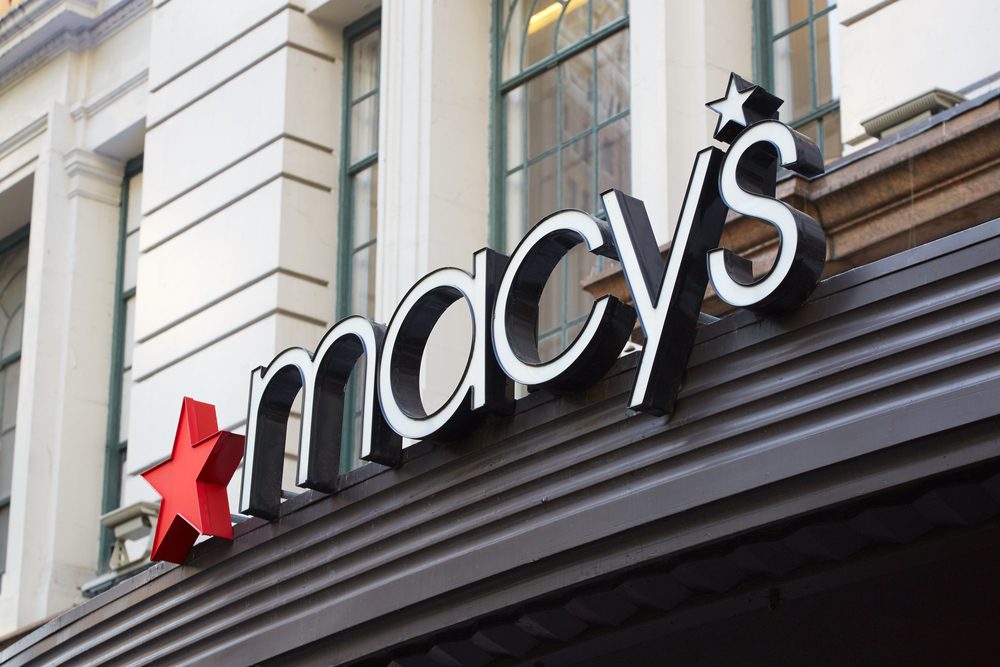Macy’s Off-Mall Small Format Stores Are Killing It and More Are Coming

Although they currently account for only 10 of its total portfolio of 722 physical locations under its many brands, Macy’s CEO Jeff Gennette can’t stop talking about the big opportunity he sees in these comparatively little stores.
Specifically, the company’s eight Market by Macy’s and two Bloomies locations that it began rolling out two years ago and run about one-fifth the size of a typical mall store are punching way above their weight class in almost every key metric.
“These stores play an integral role in supporting our omnichannel ecosystem,” Gennette told analysts and investors Thursday (March 2) on the company’s Q4 earnings call, highlighting the fact that they had also exceeded the retail gold standard of comparable store sales growth by delivering 8% and 12% increases respectively versus the 2.7% decline reported by Macy’s companywide.
Going on, Gennette said these test sights also see conversion rates that are significantly above mall locations and customer experience scores that were 25 to 30 points higher based on store layout, neatness, ease of checkout and availability of staff. Add in data that shows off-mall locations are seeing 2.5 times the visits than their on-mall peers, and it’s no surprise that Macy’s plans to keep ramping up the formula.
“In 2023, we plan on opening four Market by Macy’s and one Bloomies, and if these new locations continue to outperform, we will look to incrementally accelerate off-mall openings beginning in 2024,” Gennette said.
The Cash to Do It
The other new thing that goes hand-in-glove with Macy’s small format expansion plans is that the retailer, famed for surviving multiple financial crises and turmoil, has now worked itself into a de-leveraged position that affords it great flexibility.
“We have entered 2023 in a position of financial and operational strength,” Gennette said. “At the end of the year, we had $862 million of cash, and $1.2 billion less debt than we had in 2019, with no material debt maturities due until 2027.”
Taken together, he said the retailer would use its strong liquidity position to take advantage of opportunities, noting that the company was currently evaluating “the right number and mix of on- and off-mall locations.”
Still, Macy’s — like all retailers — is cautious on the consumer and the economy, at least for the first half of 2023. Despite what he called conflicting data, Gennette said he felt consumers were in better shape today than in 2019 — based upon what he characterized as Macy’s unique view as a modern department store that operates from off-price to luxury segments with full view of income tiers, high penetration of loyalty members and a robust credit card portfolio.
“Jobs and wages are strong and savings levels are elevated relative to historic levels,” he said, “but prices for services and goods are higher and inflation has surpassed wage growth and revolving credit is rising,” he cautioned. “Our ecosystem and customer are dramatically different today than when we announced our 125 Macy’s store closure plan in February of 2020.”
The Top-5 List
Beyond the off-mall push, Macy’s said it is focusing on four other core areas — or “growth vectors” — this year, including further expansion of its online marketplace, continued emphasis on luxury brands after record years at Bloomingdales and Blue Mercury, greater use of its data, pricing and analytics capabilities to deliver better-personalized offers and communication and the reimagination of its increasingly important private brands.
“We currently have 24 private label brands in the Macy’s portfolio, which combined, represented roughly 16% of Macy’s 2022 sales,” Gennette said. “Over the next three years we will rigorously evaluate all of them, and will refresh, reimagine and replace brands,” he added.
Instead of chasing unprofitable sales, he said Macy’s is now taking a “competitive but measured” approach to its promotions and pursuing strategic and intentional markdowns.
For the 13-weeks ended Jan. 28, Macy’s said while same store sales at its flag ship brand down 3.9%, Bloomingdales and Blue Mercury posted Q4 increases of 1.2 and 7.2% respectively.
For all PYMNTS retail coverage, subscribe to the daily Retail Newsletter.

